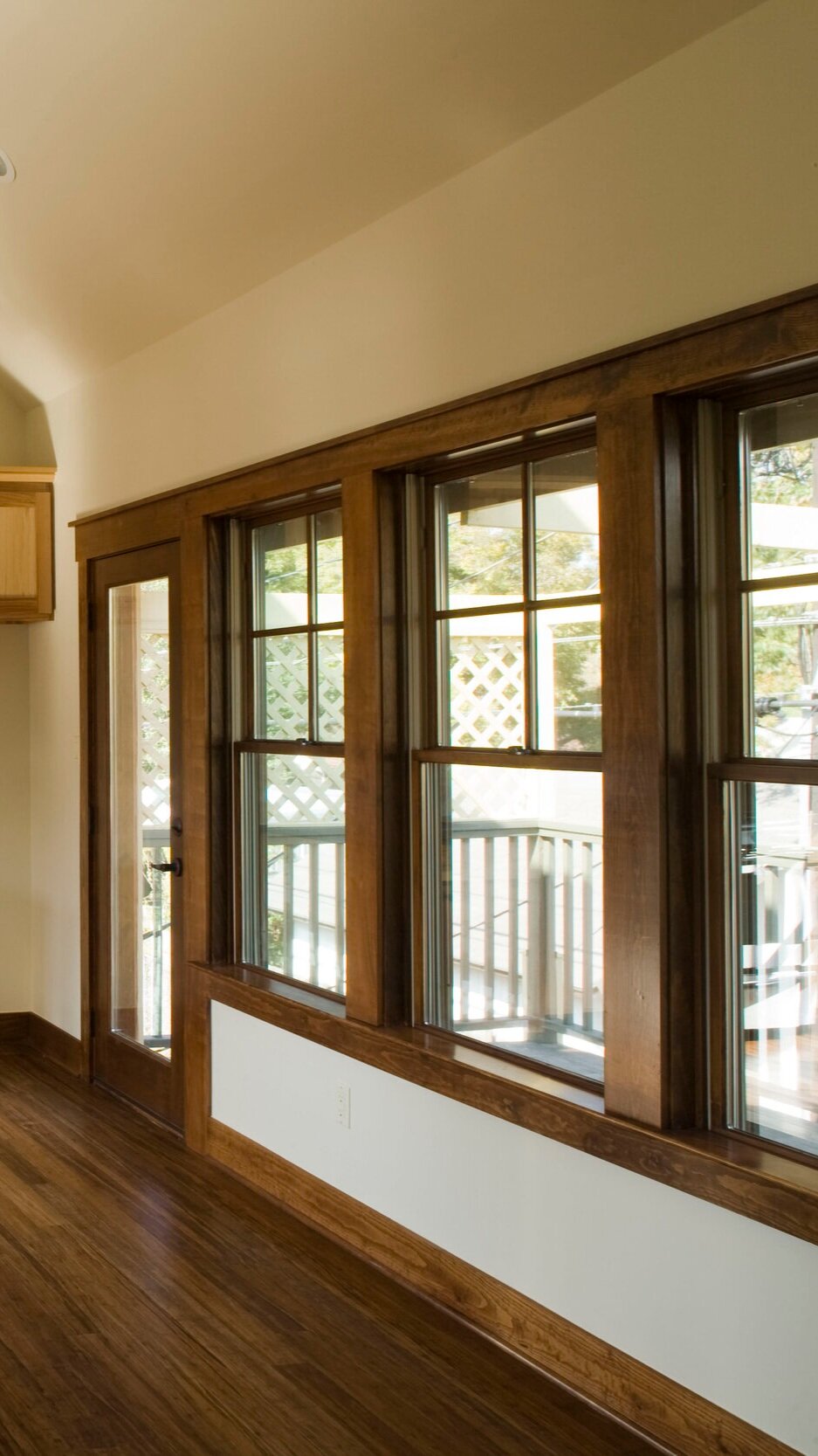The Architect’s Guide to Divided-light Windows [with Window Glossary]
Many homeowners are probably unfamiliar with the term “divided light.” However, divided-light windows are extremely common. You have probably seen them in homes before, and you may even have divided-light windows in your home already! The architects at our Austin based studio are reviewing what divided-light windows are, the difference between true and simulated divided light, as well as common window terms and definitions. Plus, we are also sharing how to choose between true and simulated divided-light windows for your home, and we are revealing how certain types of divided light match specific architectural design styles. Now, let’s dive into the architect’s ultimate guide to divided-light windows!
What Are Divided-light Windows?
First, let’s define what divided-light windows are. Divided-light windows feature dividers or grids that break up the glass panels into multiple smaller components. Pretty simple, right? Though, you probably didn’t know that there was a specific name for these types of windows. Divided-light windows offer traditional charm, architectural interest, and beautiful shadowing. They are more commonly seen on Craftsman, Colonial, and even Mediterranian style homes. A contemporary home, on the other hand, may feature windows with no divides for a cleaner and sleeker look. Many people ask if the divides serve a purpose outside of aesthetics. The answer depends on if the window is a true or simulated divided-light window. Before we move on to the differences between true and simulated divided light, we will review our glossary of window terms and definitions. (Fun fact: the dividers even have their own special name!)
Haskell residence divided light windows, a craftsman style home
Window Terms Glossary
Frame - the enclosing structure of a window that fits into and attaches to the adjoining wall.
Sash - the part of the window attached to the frame that moves and holds the glass panes.
Stiles - the vertical components of the window sash.
Rails - the horizontal components of the window sash.
Pane - the glass held within the sash.
Muntins/Grilles - the dividers within the glass panes that can either be structural in the case of true divided-light or decorative in the case of simulated divided-light windows.
Spacer Bar - the bar that separates dual panels of glass in insulated windows.
Sill - the exterior bottom ledge of the window that holds it in place and serves to direct rainwater away from the window frame.
Stool - the interior bottom ledge of the window that serves as a finishing detail.
TDL - the acronym that stands for true divided light or windows that use structural muntins to divide glass panels into smaller sections.
SDL - the acronym that stands for simulated divided light or windows that use faux muntins for decorative purposes.
GBG- the acronym that stands for grids between glass, referring to simulated divided-light window muntins that are sandwiched in between two panels of glass on insulated windows.
True vs Simulated Divided-light Windows
Now that we know all the important window terms, we can define the differences between true and simulated divided light. Divided-light windows were originally created because it was more efficient to ship smaller glass panels that would be less susceptible to breaks and cracks. In a true divided-light or TDL window, muntins have the practical purpose of holding these smaller panels in place on the larger window sash. True divided light is more commonly seen in historic homes with original wood windows or on replacement windows for homes located in historic districts with strict building codes.
Simulated divided-light or SDL windows look almost identical to true divided-light windows. The difference is that simulated light is applied to windows that have one continuous pane of glass in the sash, which doesn’t need to be divided for practical purposes. Simulated divided light is only applied for aesthetics. These decorative muntins can be implemented in two ways. They can be fixed to the exterior of the glass, offering the more three-dimensional look of real muntins from the street. They can also be created with GBGs or grids between glass. In insulated windows with GBGs, the muntins are fixed to the spacer bar that separates the two glass panes. The muntins are enclosed between the pieces of glass, offering easy maintenance but a flat look.
Choosing Between True and Simulated Divided Light
The choice between true and simulated divided light comes down to the unique specifications of the home, aesthetics, budget, and maintenance. In older historic homes, true divided light is often the best option to keep in line with architectural integrity and historic building codes. For many homeowners, aesthetics also come into play. True divided-light windows offer thicker and more detailed muntins as well as individual glass panels, which reflect light and shadow differently than one panel of glass divided by flat muntins. However, simulated divided-light and GBG windows offer easy maintenance with simple cleaning and budget-friendly pricing.
Applying Divided-light Windows to Specific Home Styles
Divided-light windows typically are grouped into sets of four, six, or nine “lights.” These “lights” are the squares formed by the muntins or dividers. Top and bottom sashes don’t have to match, and it is common to see divided top sashes paired with non-divided bottom sashes in many architectural styles, like Craftsman. A traditional Colonial home would likely feature four or six lights on both sashes and a cottage style home may showcase nine lights. Divided-light windows can even feature more unique divides, such as only vertical muntins or Prairie Style muntins that divide the window into one large square with smaller squares in the corners. When selecting the right types of divided-light windows for your home, research the style to see what has been used in the past or consult with an expert architect familiar with the components of the unique architectural design.
Did you know there are even more window styles?
Check out our blog on the 12 types of window styles and the benefits of each type.

